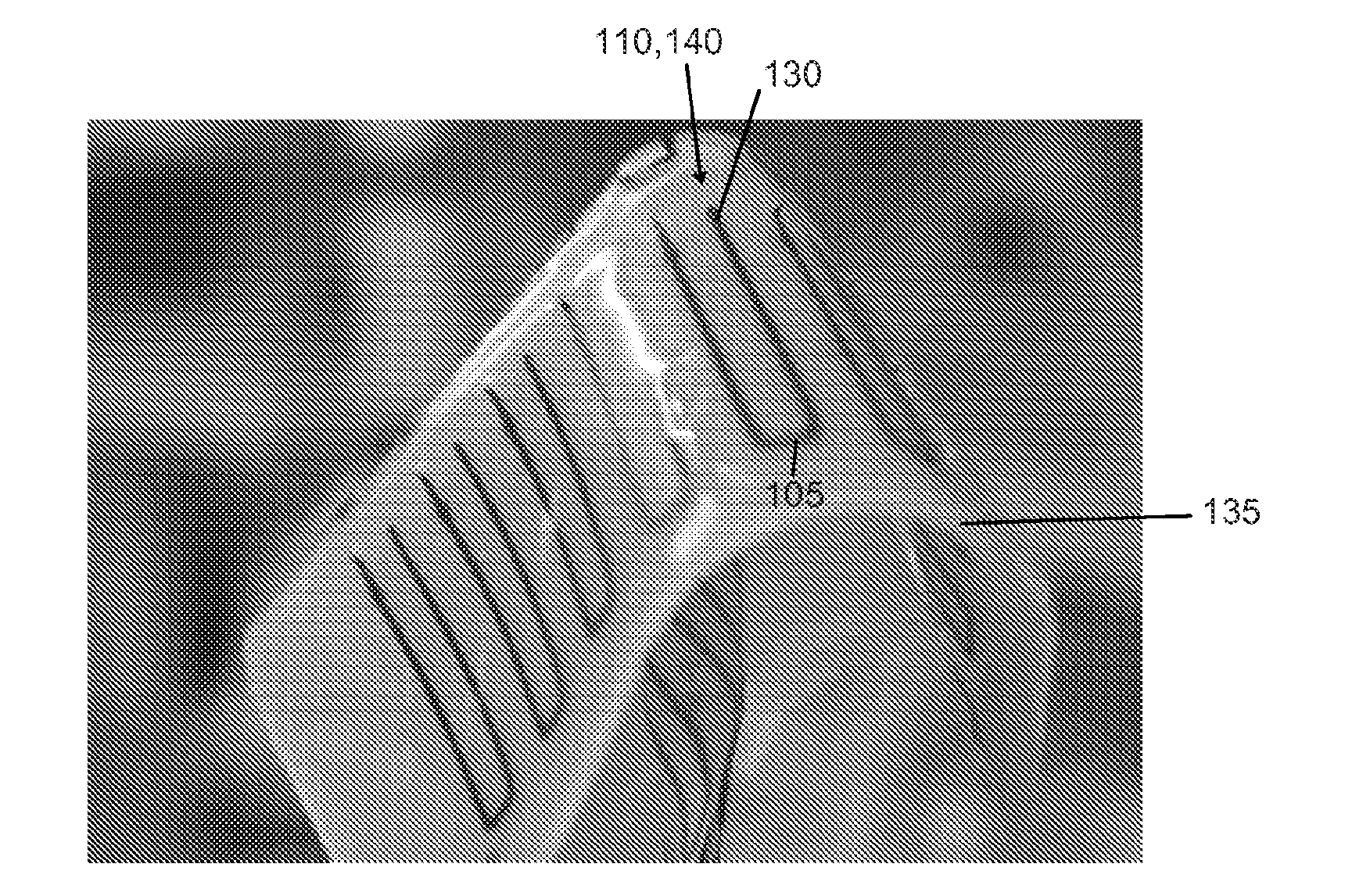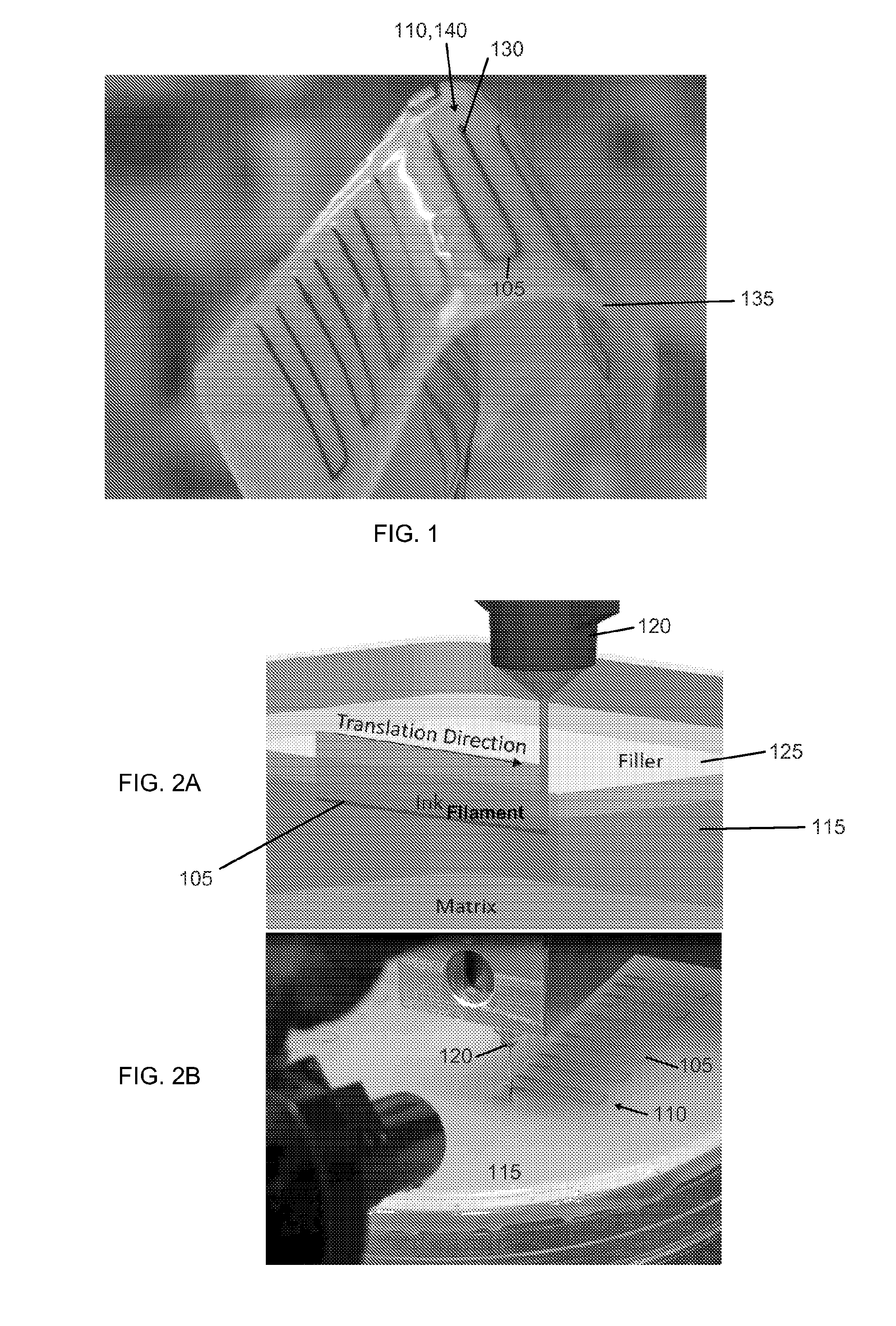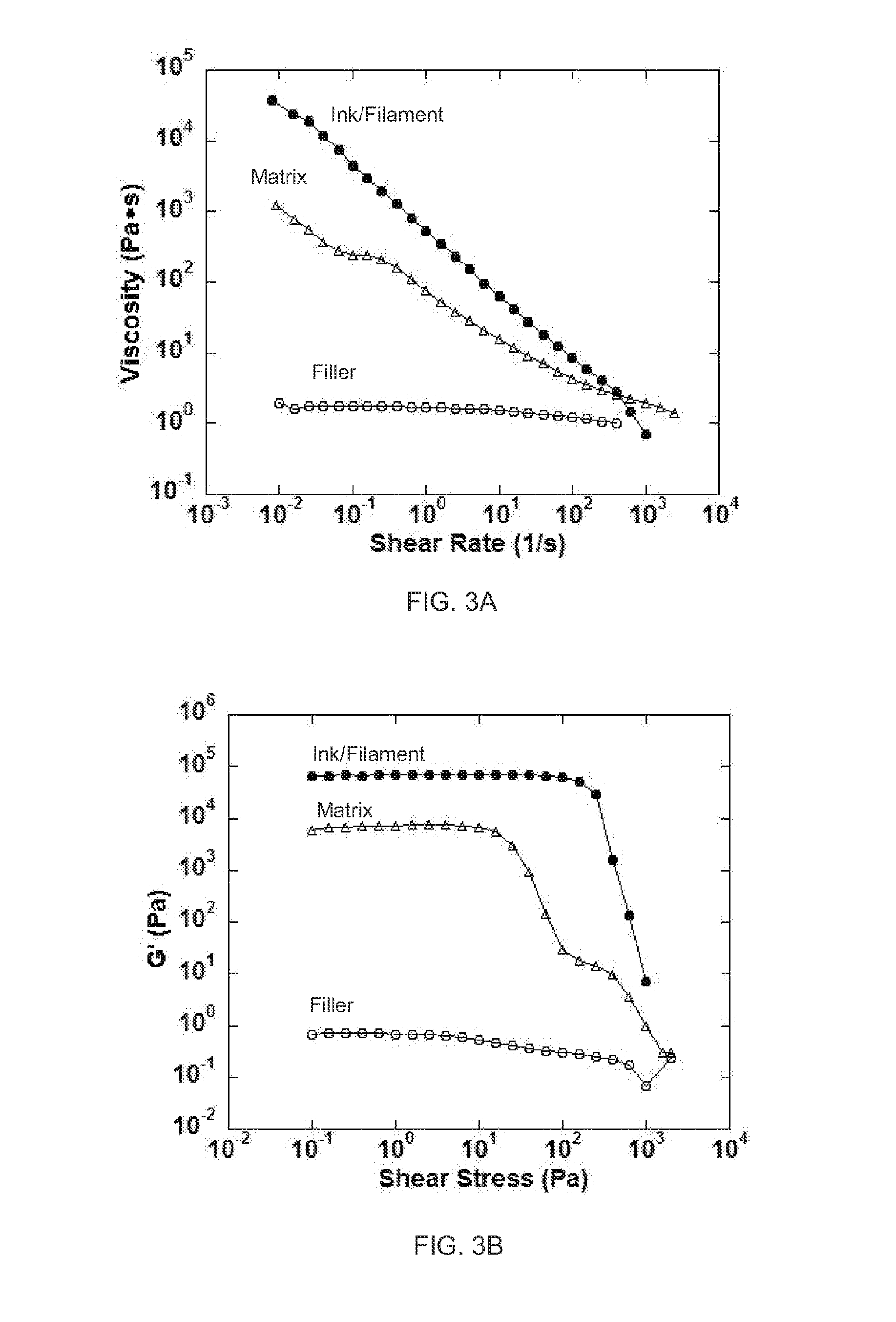Printed stretchable strain sensor
a technology of stretchable sensors and sensors, applied in the field of sensor technology, can solve the problems of current commercially available strain gauges, which include metal strips on flexible polymer substrates, specimens, and are neither highly conformal nor highly extensible, and devices are limited to maximum extensibilities of 10-20%
- Summary
- Abstract
- Description
- Claims
- Application Information
AI Technical Summary
Benefits of technology
Problems solved by technology
Method used
Image
Examples
Embodiment Construction
[0027]A novel method for fabricating highly conformal and extensible strain sensors embedded within a seamless elastomeric body is described herein. This fabrication method may be referred to as embedded-3D printing (e-3DP). Strain sensors of varying feature size that exhibit strains up to 400% may be produced individually and in arrays. These soft, stretchable sensors may possess gauge factors akin to their conventional metallic counterparts, and are designed to maintain mechanical integrity during high strain exposure over a large number of cycles. Additionally, e-3DP may be used to create functional devices for biomechanical sensing that may be integrated with a human-machine interface as described below.
[0028]3D printing typically refers to a process in which a precursor ink having suitable rheological properties is flowed through a deposition nozzle attached to a moveable micropositioner with x-, y-, and z-direction capability. As the nozzle is moved, a filament comprising the ...
PUM
| Property | Measurement | Unit |
|---|---|---|
| strain rate | aaaaa | aaaaa |
| viscosity | aaaaa | aaaaa |
| printing speed | aaaaa | aaaaa |
Abstract
Description
Claims
Application Information
 Login to View More
Login to View More - R&D
- Intellectual Property
- Life Sciences
- Materials
- Tech Scout
- Unparalleled Data Quality
- Higher Quality Content
- 60% Fewer Hallucinations
Browse by: Latest US Patents, China's latest patents, Technical Efficacy Thesaurus, Application Domain, Technology Topic, Popular Technical Reports.
© 2025 PatSnap. All rights reserved.Legal|Privacy policy|Modern Slavery Act Transparency Statement|Sitemap|About US| Contact US: help@patsnap.com



